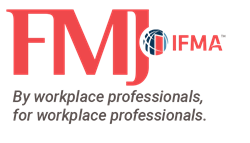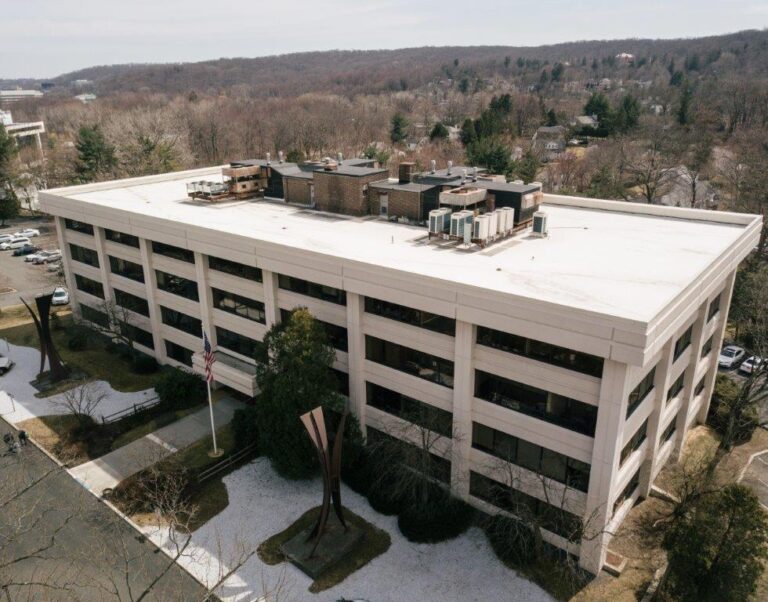This article originally appeared in the January/February 2020 issue of FMJ
Most Facilities Managers stay in their jobs for decades. Over their careers, they become intimately familiar with their buildings and operations. They know the location of every piece of equipment, and where to find the critical shut off valves for water, electricity, and gas. They know where emergency equipment is and have memorized the emergency and life safety procedures. Most of them are walking, talking libraries of key information. They do not have to look at blueprints or manuals, they simply know their buildings by heart.
And then they retire, often taking this highly specialized information with them.
Retiring facilities workers and the resulting information loss have been a troublesome issue for the facilities management industry forever, and it is about to become even worse. Surveys show most senior facility professionals are baby boomers and 60 percent of them are likely to retire in the next four to six years.
Information management in facilities management
Facilities management is inherently complex in terms of information management and record-keeping requirements. As large building complexes age, they go through hundreds if not thousands of changes depending on their size and type. The physical structure changes depending on occupancy needs, equipment gets repaired or replaced, plumbing and electrical systems get updated due to age or as regulatory requirements evolve, and the list goes on. All this information must be recorded and maintained year after year to ensure facilities stay operational, safe and efficient.
Keeping track of all the records and information that comes with these changes for legal, operational and financial reasons is a challenge. But accessing this information when it is needed most is an even bigger issue. In a crisis, a few minutes saved can make the difference between solving a $100 problem or a $100,000 problem. In the worst cases, getting information quickly can be the difference between life and death.
FMs fill a critical role when time is of the essence. While their skills as document and information managers are important, what they know and how quickly they can convey it can prove vitally important. As these key players retire, the knowledge transfer must be executed carefully along with new hires or promotions needed to replace them. Even with the best planning, it is a tall order given the nature of the industry and the complexity of the information.
Why is FM information so complex?
Two of the primary factors contributing to information complexity are the number of professionals and the amount of information they generate on a given project. Take for example a simple building extension or a tenant improvement project. Depending on its size, the project could involve just a few contractors or hundreds of contractors. In addition to architects, engineers and general contractors, there are often subcontractors in trades as diverse as mechanical, electrical, plumbing or landscaping. There are also suppliers of equipment and installation companies. All these organizations will submit information and details on their work product before they collect their final payment.
This final project information is then put together by the general contractor into a “closeout package” and handed over to the facilities managers. This is where the biggest challenge lies. There is no standard for how this information is shared. The immense amount of data relating to the project (including every change order and revision during the construction process) including “as-builts”, operations and user manuals, warrantee information, compliance and regulatory information is frequently delivered in multiple formats such as paper, or electronically on CDs, DVDs or flash drives, depending on the individuals who collected the information in the first place.
None of it is organized nor is it structured in a way it can be easily accessed, much less found. Given the nature of their jobs, facilities professionals often need to access the information quickly in the field. Studies show facilities staff waste an enormous amount of time going back and forth to the document storage rooms, searching their desktops or servers daily.
It is no wonder that long-time FM employees simply memorize information rather than relying on physical documents and file management systems to retrieve it.
What risks come with losing your FM person to retirement?
When tenured employees retire, there is not just financial risk, but also often risk related to maintenance, emergency management and tenant safety.
Imagine a leaky or broken gas pipe in a commercial complex like an office building or a hospital. Without instant access to information on shut off valve locations, the damage can easily become debilitating. Additionally, simple accidents can often become catastrophes when ongoing destruction from water, fire or fumes is unable to be contained. There is a myriad of recent examples where the inability to find a simple shut off valve during a water leak has resulted in millions of dollars in damage to buildings.
It is important to note that the problem is not a lack of information – most buildings have relevant information somewhere. The damage is caused by the lack of immediate access to the information.
The recent uptick in workplace, school and institutional violence has highlighted this need to access building information on demand. A recent post on social media showing law enforcement and administrators responding to a school shooting in Middleton, Wisconsin USA offers a chilling glimpse into the problem: [use image Middleton]
It is becoming increasingly incumbent upon building owners to have facilities information available to first responders immediately when there is a crisis.
How has access to information changed today?
Today we live in a world where even the most technical or obscure information is consumerized.
For example, if someone is about to have knee surgery, a simple search on WebMD or simply by Googling “knee surgery” provides a deep understanding about the different types of surgeries, expert advice, best hospitals for such surgeries, and more – information only a doctor could have provided previously. Likewise, shoppers using a simple phone app can scan the label on a bottle of wine to find its average price, the type of grape that was used, the vintage, where it was made and any tasting notes from recent wine enthusiasts – something sommeliers and wine experts take years to learn.
This common, easily accessed world of information affects almost every aspect of our lives. Whether buying a home, applying for a job or needing to know how to replace a filter in an air conditioner, information to help is at our fingertips. Why should facilities be any different?
If there is a building emergency, shouldn’t an office assistant or a security guard be able to find information critical to first responders as easily as someone comparing prices in a grocery store?
What could be a possible solution?
Two challenges present themselves when attempting to provide information access in a “consumerized” way:
- The information must be organized and indexed in a way that we can extract the required information from relevant documents when we need it.
- Once we extract the necessary information, we should be able to deliver this information in a format which is easy for anyone to consume it.
Extracting building intelligence
While extracting intelligence from the building information gathered over time and stored in multiple formats is a big challenge, recent technology advances allow us to do that. The use of Artificial Intelligence and Machine Learning enable us to extract building intelligence from complex documents in multiple formats. Technology allows us to store all of this data on the cloud, extract this information instantly and deliver it on mobile devices on demand. There has been significant R&D done in this space and papers have been presented in the IEEE conferences* in recent years.
Delivering building intelligence
Delivering building intelligence in a format anyone in the organization can consume – not just FMs – is critical. It also solves the problem of information retiring when tenured facilities managers do. While a cloud computing infrastructure is necessary to facilitate accessibility to mobile applications, this infrastructure is available to app developers on a variety of platforms today. For both safety and business continuity reasons, solutions to consumerize our facilities data are compelling.
 The rise of mobile technology
The rise of mobile technology
Given the rise of mobile technology, it is easier to access complex and detail information on an app. Apps make it easy for users to access information on demand. In today’s world, banking, finding a restaurant, checking a home’s security cameras, or booking a flight, all can be done easily through a mobile application. Why should Facilities Management be any different?






